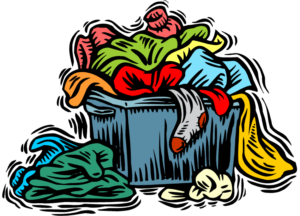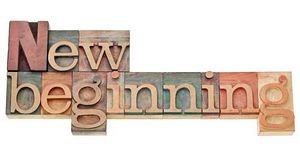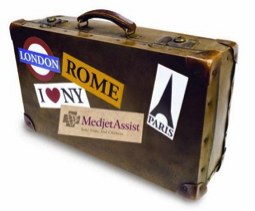 Looking for a way to shed a few pounds this summer? If you start with your home, you will gain more than weight loss benefits. Consider the excess weight that is in your home in the form of clutter. Clutter not only adds pounds, but drains your finances and takes a toll on you and your family – physically, mentally and emotionally.
Looking for a way to shed a few pounds this summer? If you start with your home, you will gain more than weight loss benefits. Consider the excess weight that is in your home in the form of clutter. Clutter not only adds pounds, but drains your finances and takes a toll on you and your family – physically, mentally and emotionally.
Take a guess at the approximate weight of these items (answers below):
By taking time to de-clutter your home this summer, you will enjoy these benefits.
Physical
Mental & Emotional
Financial
Shed some weight in your home this summer and you might find that the space you create promotes healthy changes in other areas of your life.
Answers to above: 1) 30 pounds 2) 15 pounds 3) 17 pounds.
 So much of getting organized is about building new habits. To maintain those habits, you have to exercise your organizing muscles regularly. Below are a few exercises to help you get into shape.
So much of getting organized is about building new habits. To maintain those habits, you have to exercise your organizing muscles regularly. Below are a few exercises to help you get into shape.
Remember, one of the fastest ways to feel lighter is to exercise your organizing muscles by shedding pounds of clutter. Happy New Year!
Click on the above title to learn more about the featured author.
STEP ONE: DOWNSIZE
Now is the time to be selective. Plan to bring only the items you really want in your new space.
STEP TWO: PACK
Packing Paper vs. Bubble Wrap
Packing Boxes vs. Plastic Tubs:
Packing boxes:
Plastic tubs:
Best Labeling Practices:
STEP THREE: UNPACK
Click on the title above to learn more about the featured author.
 Every time I enter a client’s home, I’m reminded of the sheer amount of stuff with which we surround ourselves. Does our stuff make our lives better or more difficult? And, what happens to all of the stuff we don’t want?
Every time I enter a client’s home, I’m reminded of the sheer amount of stuff with which we surround ourselves. Does our stuff make our lives better or more difficult? And, what happens to all of the stuff we don’t want?
Most clients try to recycle as much as they can, but the truth is, much of what is donated ends up in the dump. Just this week, I was at a baby shower and the mother-to-be received so many gifts, she remarked they would need a storage unit. She wasn’t kidding.
April 22nd is Earth Day and a great opportunity to reflect on the world we would like to leave to our children and grandchildren. Take a look at the road sides as you drive around this month. Few places don’t have plastic bags blowing in the limbs of the trees and litter strewn about. While we need things to live, conduct business and improve our quality of life, do we want to leave a legacy of trash for the next generation?
Water bottles are a scourge on our earth and resources. According to Ban the Bottle, “Americans used about 50 billion plastic water bottles last year. However, the U.S.’s recycling rate for plastic is only 23 percent, which means 38 billion water bottles – more than $1 billion worth of plastic – are wasted each year.” The EPA estimates that 75% of the American waste stream is recyclable, but we only recycle about 30% of it and The Recycling Coalition of Utah states that “Americans represent 5% of the world’s population, but generate 30% of the world’s garbage.”
How can we stop burying ourselves and our loved ones in garbage?
Happy Earth Day!
 Are you in need of a new beginning? The New Year resolutions have faded into the holiday glow, and now is a great time to renew and refresh your home, your space, your life. The best way to begin anew is to plan with intention. According to Deepak Chopra, M.D., Intention is the starting point of every dream. It is the creative power that fulfills all of our needs, whether for money, relationships, spiritual awakening, or love.
Are you in need of a new beginning? The New Year resolutions have faded into the holiday glow, and now is a great time to renew and refresh your home, your space, your life. The best way to begin anew is to plan with intention. According to Deepak Chopra, M.D., Intention is the starting point of every dream. It is the creative power that fulfills all of our needs, whether for money, relationships, spiritual awakening, or love.
Intentions are the bedrock of goals and desires. When planning with intention, you want to come from a place of authenticity. Ask yourself what you genuinely want to achieve. For your intentions to take form, it’s important to set goals.
Goals should be specific and measurable for them to be powerful and effective. That doesn’t mean that your goals must come from a place of stress and guilt, be competitive or full of pressure. Setting measurable goals gives you the clarity that is needed to help manifest tangible outcomes.
Actions support your goals and intentions allow the goals to take form. Creating daily, weekly, and monthly actions is key to achievement and may involve building or changing some habits. Habits require practice to establish or break, and the cessation of action is more about the loss of support and accountability than failure or weakness.
Sometimes we all fall short of our goals. This is when a shift in perspective can help us overcome feelings of defeat. Be kind to yourself, practice focusing on what you have accomplished and allow yourself to make mistakes. Enjoy the process and have fun along the journey.
Click on the title above to learn more about the featured author.
 To roll or not to roll…that is the question. There’s a lot of debate about the best way to pack a bag for travel. We’ve used three different methods with our clients. The best method depends on the purpose of the trip, the kind of clothing you are taking, if you prefer hanging your clothes at your destination and wrinkle control.
To roll or not to roll…that is the question. There’s a lot of debate about the best way to pack a bag for travel. We’ve used three different methods with our clients. The best method depends on the purpose of the trip, the kind of clothing you are taking, if you prefer hanging your clothes at your destination and wrinkle control.
Layering
In the layering or bundling method, layer the clothes in a crisscross fashion in the suitcase and intertwine them into a bundle. This is a great method to reduce wrinkles and we were easily able to pack as many as 25 items of medium sized women’s clothing in one 22” carry-on. The downside is that the entire bundle has to be removed and unwrapped to retrieve your clothing.
Rolling
Rolling the clothing is another popular method. You can roll each item individually or group like items together and roll as a bundle. We found that grouping like items together does save some extra space and reduce some of the wrinkling that can occur with various fabrics when rolled.
Folding
And finally, the folding method. This method does take up more space than layering or rolling. However, for some fabrics, it’s a better way to reduce wrinkling. Folding the clothing with a piece of tissue paper or plastic in the middle will reduce friction and therefore the wrinkles.
In the end, we found that a combination of methods often works best. Rolling items that don’t wrinkle easily and folding others with plastic were the easiest techniques to combine. Once the larger, bulkier items were placed in the suitcase, we filled in all the gaps with smaller items like underwear, tank tops, bathing suits and belts, so that every nook and cranny was filled.